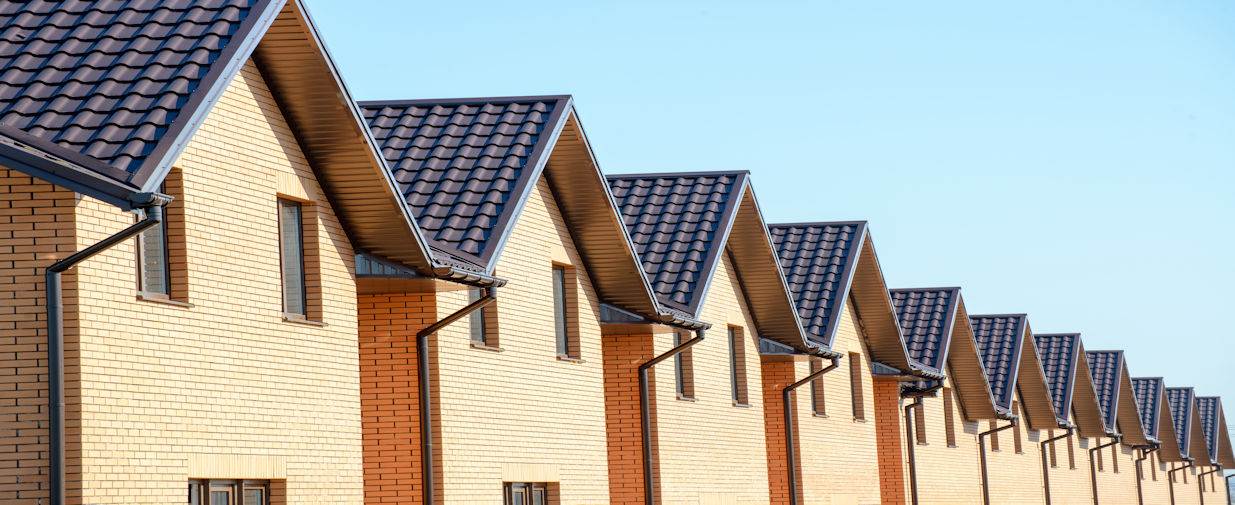Business cards
Work out how much cashback you could earn.
Read time: 4 mins Added date: 12/04/2024
Lloyds Bank has a range of finance and sustainability initiatives to help SME developers provide much needed new homes.

To say that the UK currently has issues with its housing market is beyond doubt. Quite simply, over a period of decades, neither the private sector nor the state have built sufficient new homes, with the inevitable consequence that supply has failed to keep pace with demand. As a result, house price rises have accelerated and getting a foot on the housing ladder is unaffordable for many.
Yet this has little to do with a lack of desire on the part of housebuilders to get on and build. Unfortunately, it isn’t always easy to do so, even at the best of times. The planning system, for instance, can be both difficult to navigate and resource intensive.
But these are not the best of times — and that is as true for housebuilders, especially SME housebuilders, as it is for consumers. Most prominently, interest rates have gone up far more quickly than anyone was anticipating 18 months ago. Rates were at historic lows and had been since the global financial crisis. The pace of change took many by surprise.
For SME housebuilders, it meant that the cost of debt increased and did much the same for both material and labour costs. Suddenly, business plans for projects that appeared robust became unviable, for practical purposes overnight. Many projects that had not yet started were shelved and projects that were underway saw future phases put on ice.
Planning also remains an issue. The problem has been exacerbated in the last 15 years by cuts to local authority budgets. The time it takes to win consent has become longer and longer. That is less of a concern for national housebuilders with large portfolios of projects that can, to a certain extent, balance each other out - if one project is delayed, things will probably be okay so long as others are making progress.
But it is a big problem for SMEs that are reliant on individual developments to start bringing in revenue and generating a profit. This unpredictability was an existential issue for many even before the base rate started to rise. But when rates did start to go up, it made the situation considerably more challenging, with financial directors needing to update their projections.
In addition, projects of any size are obliged to contribute in a variety of ways to the communities in which they are based. For instance, developers are typically asked to provide a proportion of affordable homes, while large developments will also need to provide facilities such as schools, GP surgeries, leisure centres, playgrounds and other amenities. These are crucial community resources, but they do come at a cost.
Ensuring that new homes are more sustainable is also vital. After all, climate change science has been clear for a long time, but in the last two or three years we have started to see what the world will look like if we fail to get carbon emissions under control. We need to make our homes more sustainable and find an economically sustainable way to make sure that happens.
Reflecting on sustainability, in February this year the government’s biodiversity net gain (BNG) policy came into effect, which stipulates that all developments must result in a BNG net gain of 10% or more for at least 30 years. Our work with the NextGeneration Initiative encourages UK housebuilders to go beyond minimum BNG standards and helps show housebuilders what good looks like.
However, there are reasons to be optimistic. For instance, borrowing rates have come down a little on the expectation that the base rate has settled and might fall later this year, which is good news for both consumers and SME housebuilders. Build cost inflation also seems to be reducing. Moreover, contrary to market expectations of falls, according to the Halifax house price index house prices were 1.7% higher in December 2023 compared to the end of 2022. That might not be great news for first time buyers struggling to assemble a deposit, but it does help make developments more viable.

It is a challenging time to be an SME housebuilder but Lloyds Bank is here to help with flexible options in terms of the finance that we are providing to our clients.
Nicola Haigh Head of Real Estate & HousingOverall, though, it is a challenging time to be an SME housebuilder and while Lloyds Bank cannot solve all of the issues detailed above, we are doing our best to help. Firstly, we have become a lot more flexible in terms of the financing that we are providing to our SME housebuilder clients.
What that could mean in practice is that if a developer feels that they do not wish to sell the homes they are building or have recently completed, in many instances we can provide the flexibility needed to allow them to rent out homes with investment facilities. This allows clients to take advantage of high demand for properties in the rental market.
We are also working towards sector decarbonisation. Clearly, there are market drivers for increasing the sustainability of new homes, including the UK’s climate legislation, our net zero ambitions and the cost of living crisis. But we also think developers should be rewarded for doing the right thing, which is why we’ve partnered with JLL, NextGeneration, Homes England and UK Green Building Council to introduce industry benchmarks. Provided developers hit certain standards, they can qualify for a nil arrangement fee through our Clean Growth Financing Initiative (CGFI). That also has the benefit of aligning with Lloyds Bank’s Sustainable Finance Framework.
Finally, we are proud to be both a national institution and also one that has a network of teams that truly understand local markets. By having relationship managers and directors close to development sites we can get closer to our clients and build genuine partnerships. With all these initiatives, we’re looking to deliver a win-win scenario for all concerned.
Reproduced with permission from Property Week